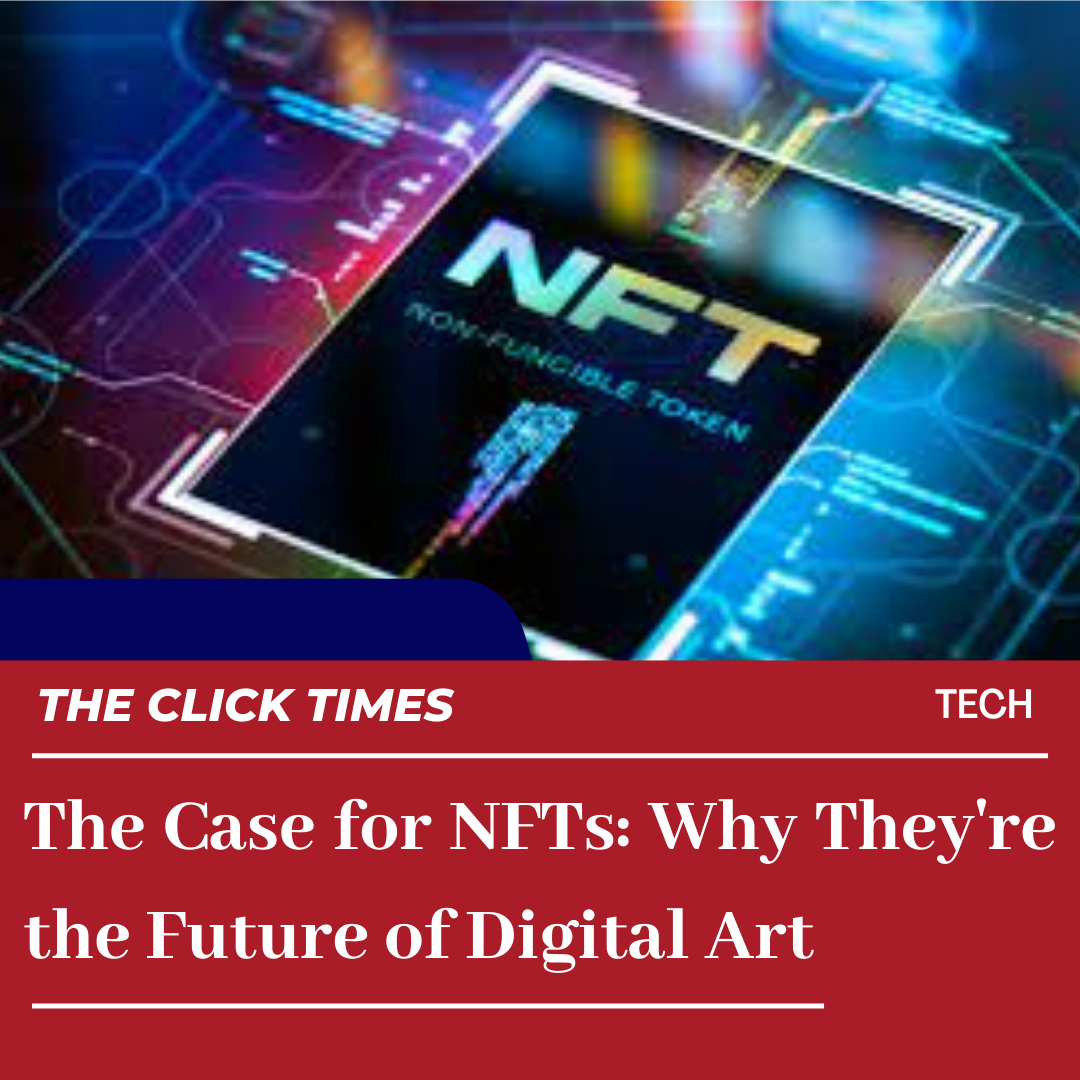The Click Times: There’s no question that artists love making digital art. There are many ways to do so, with the most common being using software like Photoshop or Clip Studio Paint. While these programs are incredibly powerful, they also have their limitations. NFTs (non-fungible tokens) offer an exciting solution to this problem because they allow artists to create unique digital artwork which can be traded and sold using blockchain technology, just like cryptocurrencies such as Bitcoin or Ethereum. If you’re interested in the future of digital art, you should read this article about the case for NFTs.
What are non-fungible tokens (NFTs)?
Non-fungible tokens are a relatively new, digital medium of exchanging assets. These tokenized assets come in the form of limited, digitally tracked, tradable digital scarcity in forms such as digital art and collectibles like crypto kitties. Much like their physical counterparts, these tokens can be highly valuable to collectors but they differ from traditional investments as they cannot be broken down into smaller units. Unlike fungible currencies, each token is unique and provides value for collectors. A good example of this type of use case is CryptoKitties where one cat may be worth tens or even hundreds of thousands because it has an exclusive cattribute that makes it more desirable than other cats that don’t have that trait.
Are NFTs the future of digital art?
NFTs can take many forms, from crypto-collectibles and in-game objects to static digital art, so there’s plenty of different opportunities for creatives. What if we could change and improve the way people value digital art by enabling a new type of secondary market? Platforms such as OpenSea are showing that NFT markets have potential. What if we could create something even more decentralized than OpenSea that removes middlemen and redistributes market power to artists? And what if this new platform was also sustainable? These were some of the questions I was asking myself after attending Artsy’s first Decentralized Blockchain Summit last week. That evening, I left the summit with my laptop open on my bed and started looking into building a blockchain-based application for arts collectible trading with an eventual plan to integrate it into our company ecosystem at Artsy.
How does NFTs Work
NFTs can be anything from exclusive physical items, to custom digital assets. But how does it work? The owner, who can be an individual or an organization, uploads a piece of digital content such as artwork or writing and then assigns a designated name and value in tokens to that digital content. Each token is equivalent to one minute of time on that artwork. Then they place them on the market by listing them on a crypto-currency exchange or by selling them directly through their own website. Whoever buys these tokens becomes their new owner, with all of the rights associated with ownership including exclusive access to that content. There are also now opportunities for collectors to buy and sell other NFTs which have been created on the secondary market. Not only does this incentivize creators to continue producing quality artworks but it also gives investors/collectors something interesting to buy and sell within their network of friends.
Can non-fungible tokens be used for gaming?
Non-fungible tokens are used to create collectible items and art that people can truly own. Take CryptoKitties, for example. These blockchain-based creatures can be bought, sold, or traded using Ethereum–the system’s cryptocurrency. There are two different types of crypto kitties, both of which represent the same furry friend but come with different attributes and characteristics. The first type is a Gen 0 or genetic kitten, while the second is called a Cattributes or cattribute kitten. The former has more desirable qualities because it will only ever exist once on the Ethereum network (i.e., only one player in this game could have it), whereas there could theoretically be many of the latter type (i.e., there could be five players who each have their own Cattributes kittens).
Who will use non-fungible tokens?
E-sports players, gamers who are sick of in-game ads, influencers or content creators and artists. Everyone has something they create that is worth exchanging with other people—their hobbies, ideas and skills. If a creator creates something valuable then there should be a way to exchange it, right? Traditionally this was done by negotiating over transactions or sharing a virtual copy. But what if you want to own your data outright? That’s where digital art comes in.
Some concluding remarks on the potential uses and applications of NFT’s. As with anything, there are pros and cons to this new emerging asset class. The biggest disadvantage is that because these assets are non-fungible, they cannot be used as collateral against debts or exchanged on exchanges such as Bitfinex. That said, because it’s so difficult to determine what an individual unit is worth due to rarity and other factors such as condition, some argue that these NFTs represent a more democratic form of ownership that appeals not only to collectors but people from all walks of life who have limited access to wealth. For creators looking for a way to support their craft in an age where digital art feels easily forgotten and a little old fashioned, virtual art galleries provide significant opportunities for artists and maintainers alike.

